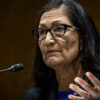In two months the Federal Reserve Bank of Kansas City will hold its annual symposium in Jackson Hole, Wyoming. It is here that, for more than 30 years, “participants from across the globe gather … to discuss important policy issues of mutual interest.”
Previous topics have included labor market dynamics and unconventional monetary policy, but this year’s theme is “Inflation Dynamics and Monetary Policy.”
In 2012, Fed Chairman Ben Bernanke kicked off the conference by reviewing “the evolution of U.S. monetary policy since late 2007.”
While these short-term evaluations are certainly useful, can’t we do a little better? The Fed’s been around since 1913. Isn’t its long-term track record more important than its post-crisis performance?
Some people certainly think so, and they’ll be holding their own conference in Jackson Hole, just down the road from the Fed’s gathering. Sponsored by the American Principles Project, this conference’s theme is “Central Banks: The Problem or the Solution?”
It’s certainly a valid question. The Federal Reserve is nothing like the central bank that was created in 1913, and overall it has not increased economic stability relative to the pre-Fed era.
It’s true that recessions were more frequent in the pre-World War I era than in the post-World War II period, but this comparison omits roughly 30 years that included the Great Depression. When the entire Federal Reserve period is compared to the full pre-Fed period, the frequency of recessions has not decreased.
Even when you exclude the interwar period and throw out the Great Depression, the Fed’s track record still isn’t as great as central bankers would have us believe.
For instance, the average length of recessions, as well as the average time to recover from recessions, has been slightly longer in the post-World War II era than in the pre-Fed era.
Yet, even people who tend to shun economic centralization have no problem at all supporting a central bank. To some extent this debate was hashed out prior to the Fed’s founding, but the debate is no longer simply theoretical.
We now have 100 years of experience with our central bank against a backdrop of Keynesian-style government management of the economy. The original impetus was simply to provide a central method for stemming currency shortages, but the Fed has become something very different—at least partly because it’s a government agency.
Many serious scholars have dedicated their life to this topic, but the debate over the proper role of a central bank rarely takes place outside of this group. In the typical graduate school, even monetary economists take the necessity of a central bank for granted.
So it’s encouraging that monetary policy reform ideas are gaining more ground in Washington than ever.
Rep. Kevin Brady, R-Texas, has just reintroduced legislation to create a National Monetary Commission. Such a commission would be the perfect vehicle for publicly assessing the Fed’s overall performance and implementing the best long-term monetary policy reforms.
Permanently moving the U.S. toward a truly competitive monetary system—one that’s wholly compatible with free enterprise—should be part of the national debate. But it’s unlikely to gain the public’s attention without some sort of formal congressional commission.
In the meantime, here’s a list of policy reforms that can inform the debate:
- End the Fed’s broken Lender-of-Last-Resort function. Congress should help to minimize the chances of future “too-big-to-fail” credit allocation by revoking the Federal Reserve’s emergency lending authority and closing the discount window. There is no clear economic rationale for the Fed to provide direct loans to private firms, and the discount window is a relic of the Fed’s founding.
- Update the Federal Reserve’s primary dealer system. The current primary dealer framework was created in the 1960s when there were clearer advantages to having a centralized open market system in New York. In the 2008 crisis, though, several Federal Reserve officials acknowledged that the primary dealer system, with its reliance on a small number of firms, actually hampered the Fed’s ability to provide liquidity. At the very least, expanding the participants in open market operations would make the federal funds market less dependent on any particular institution.
- Require the Fed to select a short-term, rules-based policy. For example, the approach offered in the Federal Reserve Accountability and Transparency Act of 2014, would require the Fed to choose its own monetary policy rule. It would also give the Fed the flexibility to stop following its policy rule, provided that it explains this decision to Congress. A policy based on this type of rule would avoid some of the drawn-out, scholarly debates sure to ensue in a formal monetary commission, and it would not overly restrict the Fed.
- Reverse quantitative easing. The Fed’s QE policies serve a reminder that a central bank enables deficit spending. With the latest QE round ending in October 2014, the Fed’s balance sheet shows more than $2 trillion in long-term Treasuries and nearly $2 trillion in GSE securities. Holding such large quantities of securities, many of which are of questionable value, unnecessarily exposes taxpayers to losses and heightens the risk of future inflation. The Fed should start reversing these QE purchases and bringing its balance sheet back to the size it was prior to the QE programs.
- End the new reverse repo program. The Fed’s Overnight Reverse Repurchase Facility (ON RRP) would ultimately result in yet another expansion of federal involvement that adds to firms’ incentive to take financial risks. Under this program, the Fed’s counterparties—including Fannie and Freddie—can give “a secured loan to the most creditworthy borrower on the planet.” More broadly, this program essentially turns the Fed into a borrower of last resort; it provides lenders with a guaranteed rate of return at the expense of private markets. Because there is no risk the Fed will fail to uphold its end of the contract, an expanded ON RRP increases the likelihood that even more firms will run straight to the Fed during market instability.
- End the Fed’s role as a financial regulator. A central bank does not need to be a financial regulator to conduct monetary policy. Allowing the Fed to serve as a financial regulator increases the likelihood that policy decisions will be compromised as the Fed’s employees become embedded in the financial firms they are supposed to be overseeing. Removing the Fed from its regulatory role would leave at least five other federal regulators overseeing U.S. financial markets.
- Let private innovations flourish. The privately produced digital currency Bitcoin is just one example of a market innovation which allows people to choose their own mediums of exchange. Congress should ensure that these types of private innovations flourish by, at the very least, preventing any regulatory actions which may threaten their use. Concerns over people using digital (or any other non-U.S. dollar) payments for illegal activity should not result in these technologies being held to higher standards than payment systems based on the dollar (or other national currency). Criminals often break the law in pursuit of money, but the policy solution is not to outlaw money. Congress could also encourage these types of private innovations by passing several modest reforms: eliminating capital gains taxes on alternative currencies; repealing statutes banning private coinage, and clarifying money-laundering laws, bank secrecy laws, and money transmitting licensing requirements so that they are not used to restrain private-sector innovations by individuals who have committed no crime.
This list is likely far from comprehensive, and nothing should be banished from debate, not even the gold standard, a system incorrectly criticized for at least a century.
In 1985, Nobel Prize winning economist F.A. Hayek suggested (around the 2:50 mark) the best reform approach was to let private firms issue competing money and allow people to choose which moneys they prefer to use.
Allowing people to hold and use the money they prefer will not solve all economic problems but neither will legal restrictions and government monopoly. As with any privately produced good, inferior forms of money should not be expected to replace an economy’s preferred medium of exchange.
A moderate view, therefore, is that the Fed should not be shielded from competition against alternative monies.
That’s what policymakers should be debating in Jackson Hole. And depending on which conference we’re talking about, some of them will be doing exactly that.
























